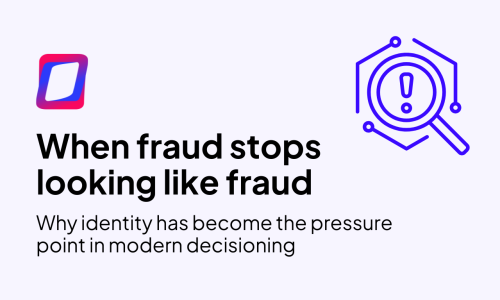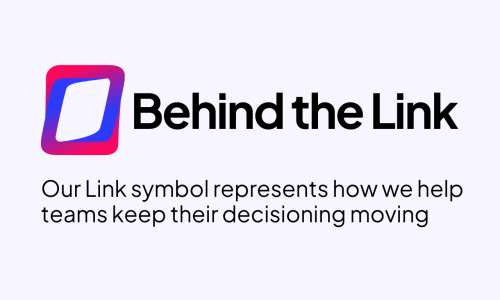How to Hedge Credit Risk
5 Strategies for Smarter Portfolio Protection and Retention
In an increasingly complex economic environment, shaped by rising interest rates, geopolitical tension and policy shifts, lenders such as banks, credit unions and specialty lenders face mounting pressure to protect their portfolios from defaults and economic downturns. Credit risk is an unavoidable part of lending, but how institutions manage and hedge that risk can make all the difference.
While the terms “mitigating” and “hedging” credit risk are often used interchangeably, they represent distinct approaches. In this article, we’ll explore that difference, the types of hedging strategies that institutions can employ and how GDS Link empowers lenders to deploy data-driven strategies that support smarter hedging decisions through risk segmentation and predictive modelling.
Hedging vs mitigating credit risk: What’s the difference?
Mitigating credit risk involves reducing the likelihood of a borrower defaulting in the first place. This includes actions such as tightening lending criteria, enhancing underwriting models, or requiring collateral. In essence, mitigation is about preventing loss.
By contrast, hedging credit risk accepts that some losses are inevitable and focuses on transferring or absorbing the risk to reduce potential impact. Hedging strategies include loan sales, credit derivatives, credit insurance, and structured finance solutions.
In short:
- Mitigation = Avoid the risk
- Hedging = Protect against the impact
The most successful lenders adopt a hybrid approach, blending robust risk mitigation with hedging tools informed by high-quality, data-driven insights.
Hedging strategies: how lenders can protect their portfolios
Successfully hedging credit risk requires more than just acknowledging the threat of borrower default; it demands a strategic toolkit tailored to shifting economic conditions and portfolio composition. Whether dealing with volatility triggered by interest rate hikes, market uncertainty, or external shocks like tariff-driven supply chain disruption, lenders need flexible, data-informed solutions. Below are some of the most effective tools lenders can use to hedge the different types of credit risk and shield their portfolios from potential losses.
1. Loan Sales and Securitisation
What it is:
Loan sales involve selling individual loans or parts of a loan portfolio to other financial institutions or investors. Securitisation takes this a step further by bundling loans into structured financial products (e.g. mortgage-backed securities or collateralized loan obligations) that can be sold on the secondary market.
How it helps to hedge credit risk:
This approach reduces a lender’s direct exposure to high-risk borrowers by transferring the credit risk to other parties. It also provides greater liquidity and frees up capital for new lending activity. Data-driven risk segmentation ensures only the riskiest or non-core segments are offloaded, maximising returns.
2. Credit Insurance
What it is:
Credit insurance (or trade credit insurance) is a policy that protects lenders or suppliers against losses from borrower default or delayed payment. It’s commonly used in B2B and international trade finance.
How it helps to hedge credit risk:
By insuring receivables or loans, lenders can reduce the financial impact of defaults. It also enhances confidence in lending to higher-risk borrowers or entering new markets. Predictive models help lenders determine when credit insurance is warranted, and what level of coverage is most cost-effective.
3. Credit Derivatives
What it is:
Credit derivatives, such as Credit Default Swaps (CDS), are financial instruments that allow one party to transfer the credit risk of a borrower to another party in exchange for a fee.
How it helps to hedge credit risk:
These products enable lenders to hedge against potential default without selling the underlying asset. They offer a flexible way to manage exposure to specific borrowers or sectors. Their effectiveness, however, depends on having timely, accurate data to assess the probability of default and pricing the instruments correctly.
4. Structured Finance Solutions
What it is:
Structured finance involves creating customised financial instruments, often through complex legal and financial engineering, that allow risk to be separated and allocated to different investors based on their appetite.
How it helps to hedge credit risk:
Lenders can segment risk into tranches with varying levels of exposure and reward. This makes it easier to attract investors while retaining control over the most strategic parts of the portfolio. Advanced segmentation and behavioural analytics, such as those offered by GDS Link, ensure the right assets are included in the right structure.
5. Credit Risk Management Software
What it is:
Credit risk management software, such as the solutions provided by GDS Link, enables lenders to assess, monitor, and manage credit exposure using real-time data, predictive analytics, and customisable risk models. It brings together internal and external data sources to deliver a unified, data-driven view of portfolio health.
How it helps:
While not a hedging instrument in itself, software plays a foundational role in supporting effective hedging strategies. It enables lenders to:
- Identify early warning signs of borrower distress
- Segment portfolios based on current and forecasted risk levels
- Model the impact of macroeconomic changes (e.g. interest rate hikes or tariff changes)
- Inform decisions around loan sales, insurance, or derivative usage
With GDS Link, lenders gain the intelligence needed to act quickly and confidently, ensuring that risk transfer mechanisms are deployed at the right time and in the right places.
The role of data in hedging credit risk
Effective hedging requires more than just financial instruments – it requires insight. That’s where GDS Link comes in.
Risk segmentation that drives better decisions
GDS Link enables lenders to divide their portfolios into fine-tuned risk tiers based on borrower behaviour, market conditions, and macroeconomic data. By understanding which segments pose the greatest threat, lenders can target hedging strategies precisely, rather than taking a blanket approach that wastes time and capital.
Predictive modelling to stay ahead
With machine learning models trained on diverse data inputs, GDS Link helps institutions predict future borrower performance with greater accuracy. This forward-looking view is crucial in identifying when and where to implement credit insurance or transfer exposure.
Enabling smarter portfolio strategies
By integrating external data sources, behavioural analytics, and custom scorecards, GDS Link turns raw data into actionable intelligence. This makes it easier to identify:
- Which loans to sell
- What level of credit insurance is justified
- When to restructure exposure
- How to reduce capital requirements while maintaining compliance
In today’s dynamic lending environment, hedging credit risk isn’t a luxury, it’s a necessity. While mitigation helps prevent defaults, hedging protects against the inevitable. With the right data, lenders can not only reduce the impact of defaults but also build resilient, agile portfolios ready for whatever the future holds.
GDS Link empowers lenders to do just that through advanced segmentation, predictive analytics, and decisioning tools that bring clarity to complexity. Whether you’re looking to sell off high-risk assets, optimize credit insurance, or structure a more secure portfolio, we provide the data intelligence that makes hedging work.
Learn about how GDS Link does this and schedule a demo below!
Recent articles

When Fraud Stops Looking Like Fraud
Read article
Behind the Link
Read article





